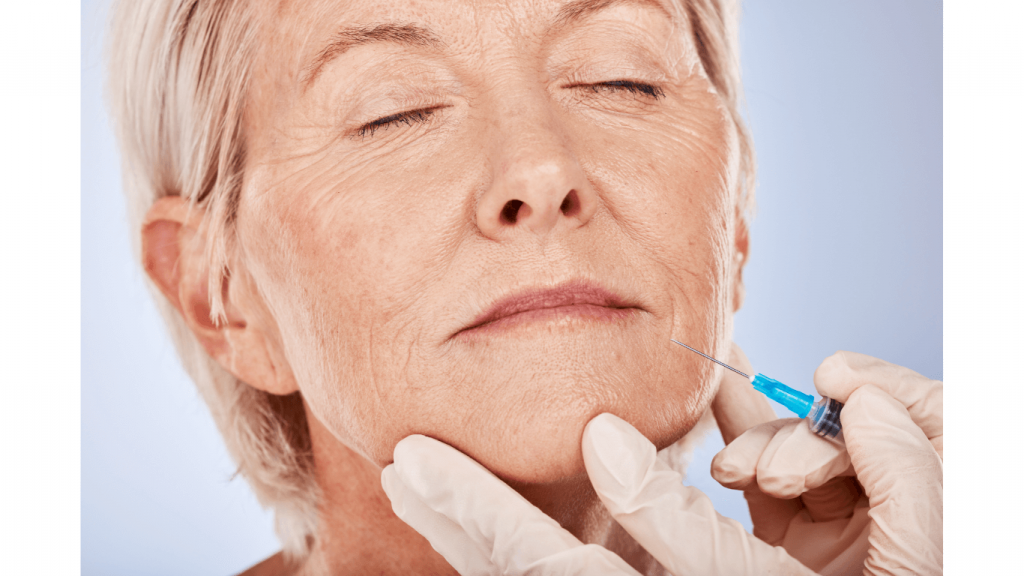
By examining various aspects such as composition, properties, indications, and clinical outcomes, this article seeks to assist medical professionals in making informed decisions when choosing between these cosmetic titans for their patients.
Choosing a suitable dermal filler is vital for doctors and nurses in aesthetics. Comparing dermal fillers is crucial for finding the right product tailored to individual needs, ensuring optimal results and minimal risk. This comparative analysis helps patients and practitioners make informed decisions regarding results’ safety, efficacy, and longevity.
This guide looks at Revanesse Versa and Juvederm. Both fillers have different components inside and work in their own ways. We discuss what’s in them, how they feel, and where you can use them, which helps you pick the best one for each patient.
In this article, we will discuss their effectiveness, side effects, and costs to help aestheticians choose between Revanesse Versa and Juvederm.
Revanesse Versa fillers are all about its hyaluronic acid base, which naturally forms in our bodies. Hyaluronic acid is known for holding water and keeping skin hydrated and plump. The efficacy of Revanesse Versa comes from how this hyaluronic acid is cross-linked. Cross-linking means the molecules are bound together to make them last longer once injected.
Juvederm uses HA similar to what our bodies make naturally. It stands out with its main ingredient, hyaluronic acid (HA). This substance is key for adding volume and smoothing out the skin. It does so by pulling in moisture to the injected area. The HA in Juvederm is cross-linked. This process makes the filler last longer under the skin. It provides immediate results that make skin look full and soft.
Each brand offers value by utilizing cross-linked HA technology, which bolsters longevity and satisfaction post-treatment. These are vital considerations when medical professionals buy Revanesse filler or decide to incorporate Juvederm into their aesthetic practice.
Moving from the broad discussion of composition and properties, we explore Revanesse Versa’s unique makeup. Revanesse Versa stands out because it has a high-quality formulation with smooth and consistent results. Thanks to its unique process, the hyaluronic acid in Revanesse Versa breaks down slower than other fillers do.
This slow breakdown helps patients enjoy their youthful look for a more extended period without frequent touch-ups. Also, more product per syringe than Juvederm offers an added bonus for those looking to add volume or treat more extensive areas with fewer syringes.
The unique way Juvederm is made allows it to flow easily into the skin during treatment. Doctors find it smooth to work with. Patients see their wrinkles and lines fill up immediately, giving them a natural look.
Juvederm has various types designed for different needs – from fine lines to deep folds or enhancing lips’ volume, all using HA as their core component.

Revanesse Versa stands out with its uniform, spherical particles of cross-linked hyaluronic acid. This uniformity allows for smooth injection and distribution within the tissue. The product’s distinct viscosity offers just the right balance – not too thick or thin- making it versatile for various treatment areas.
Juvederm’s formulation achieves its effects through a different particle size and viscosity approach. This difference can influence how each filler behaves once injected into the skin. For instance, fillers with larger particles or higher viscosity might be preferred for deeper wrinkles or more volumizing effects because they stay in place better.
Knowing these details helps medical professionals pick the best option depending on the patient’s needs, ensuring both safety and satisfaction with results.
Doctors often choose Revanesse Versa for areas that need extra care, like the lips. This filler is excellent because it can improve the appearance of these delicate spots without causing much discomfort.
People love using it to add volume to their lips and smooth out lines around their mouths. It’s also suitable for fixing deep wrinkles and folds, making skin look youthful again. With its gentle formula, patients get fantastic results with little downtime – meaning they can enjoy their new looks quickly.
Other preferred spots for Revanesse Versa include under the eyes to reduce dark circles or hollows, cheeks for a fuller appearance, and even parts of the face that have lost volume over time.
Moving from Revanesse Versa to Juvederm, we see a focus on various treatment areas. Juvederm is well known for its ability to smooth out wrinkles and add volume where it’s needed most.
It efficiently treats areas like the cheeks, lips, and around the mouth. With products like Voluma XC specifically for cheek enhancement, professionals can effectively target facial muscles to manage dynamic wrinkles. This approach restores volume and lifts and contours the face for a more youthful appearance.
Lip enhancements and smoothing of lines around the nose and mouth are other key treatment spots for Juvederm fillers. This range’s versatility allows aestheticians to create softer, natural-looking results.
Clinical trials have shown that Revanesse Versa works well and lasts longer than Juvederm in smoothing out wrinkles, especially in the nasolabial fold area. This means patients can enjoy their smooth skin for a more extended period before needing another treatment.
Studies comparing this filler with others highlight its effectiveness, pointing out that it does not break down as quickly.
Patients who chose Revanesse Versa noticed better results, which lasted longer, offering them value for both time and money. This advantage makes it a go-to option for those looking to maintain a youthful look without frequent visits to their aesthetician.
Studies have shown that Juvederm works well to fill wrinkles and add volume to the face. Its main ingredient, cross-linked hyaluronic acid, is vital for its effectiveness. Research comparing it with other fillers proves it’s just as good, if not better, in some cases.
One study found that Juvederm Voluma did a great job restoring cheek volume, matching another product called ART FILLER Volume.
Patients who get Juvederm are often pleased with their results. The filler lasts a long time and has few side effects.
Revanesse Versa might cost more, between $700 and $1,000 per syringe. On the other hand, Juvederm offers options like Ultra and Ultra Plus for about $649 each. But if someone wants something from Juvederm’s Vollure Voluma or Volux lines, they’d need to spend between $749 and $850.
Juvederm often costs between $500 and $800, making it a go-to choice for many. On the other hand, Revanesse Versa’s price tags hover around $700 to $1,000. Juvederm is more wallet-friendly for most people looking to smooth out those wrinkles or plump their lips without breaking the bank.

Choosing between Revanesse Versa and Juvederm depends a lot on what you need. Both are great for smoothing out wrinkles and making lips fuller. Think about cost, how long they last, and what you want to look better.
Talk with a doctor who knows both products well. They can help you pick the best one for you.
Join our newsletter to receive latest news and offers

Medicle MD Ltd
Reg. Number: 14317237
Address: 27 Old Gloucester Street,
WC1N 3AX London,
United Kingdom